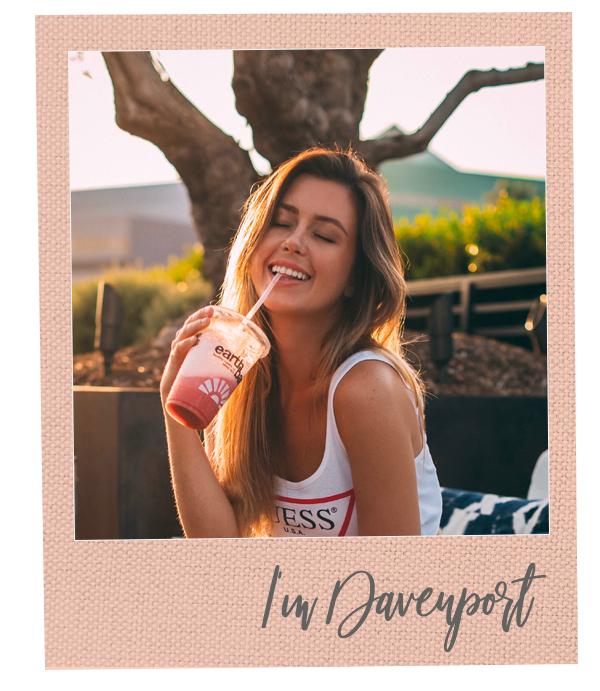The white stuff story starts in a snow-dusted French resort where two university friends sold cheeky slogan tees out of the back of a beaten-up camper van in 1985. Four decades later, that same mischievous spirit fuels a fully fledged lifestyle label with more than 120 UK boutiques, a thriving global e-commerce arm, and cult status among style seekers who prize color, craft, and curiosity. But what sets White Stuff apart in an overcrowded high-street wilderness is not slick advertising or season-chasing trends—it is wanderlust stitched into every seam. From insulated parkas that shrug off coastal drizzle to cotton-linen dresses airy enough for a city ramble, the brand’s DNA reads like a passport stamped with places rather than runways. This article follows the journey from static racks to cinematic experiences, mapping how White Stuff turns ordinary wardrobes into rolling itineraries.
Table of Contents
From Ski Slopes to City Streets: The Evolution of an Explorer’s Aesthetic
White Stuff’s founding myth may be Alpine, yet its modern collections feel equally at home on the District line or the Devon cliffs. That trans-terrain confidence springs from design decisions rooted in the founders’ nomadic cravings. Each season begins with a “destination dossier”: a mood board of far-flung photographs, flora samples, field notes, and café receipts gathered by an in-house expedition team. Silhouettes riff on utilitarian classics—field jackets, fisher knits, dungarees—while playful surface prints echo maps, tide charts, or vintage ski-lift tickets. Crucially, color palettes replicate journeys from dawn to dusk: blush-pink horizon stripes fade into deep-sea indigos and campfire ochres. The result is clothing that looks lived-in on arrival as if it has already bagged a few summits before hitting store shelves. Customers cite this “pre-packed narrative” as the secret sauce: they feel like participants in an unfolding travelogue rather than mere consumers of fashion.
Designing for Day-Long Adventures: Materials, Fits, and Hidden Function
Though White Stuff’s outward vibe is whimsical, the under-the-hood engineering is almost technical-wear serious. Garment technologists subject prototypes to lab simulations of drizzle, UV glare, and 10,000-step commutes, ensuring fabrics flex with movement yet hold their shape after repeated laundering in a hostel sink. Soft-handle organic cotton twill receives a brushing process that traps insulating air without extra bulk—ideal for layering under a waxed jacket when the forecast cannot make up its mind. Stretch panels appear in surprising places, such as the gusset of a midi skirt, allowing cyclists to pedal to the office café stop without flashing fellow commuters. Even the brand’s beloved statement buttons carry function: sculpted from corozo nut or recycled metal; they are designed for easy re-sewing with the repair kits tucked into many swing tags. In short, every element is considered through the lens of “Will this survive a weekend road trip?”—and if the answer is no, it goes back to the cutting table.
Sustainable Stitches: Ethics Beyond Aesthetics
True wanderlust demands a healthy planet to roam, so White Stuff has spent the past decade integrating environmental checkpoints into its supply chain trail. By 2023, 95 percent of cotton styles carried a Fairtrade or Better Cotton Initiative certification, and all denim lines pivoted to laser finishing and ozone washing—methods that slash water use by up to 80 percent. Wool sourcing moved to farms audited under the Responsible Wool Standard, while recycled polyester spun from post-consumer bottles replaced virgin synthetics in quilted liners. The marquee achievement, however, is the White Stuff Re-Wear program: a circularity portal where customers trade in pre-loved pieces for store credit, and garments are cleaned, photographed, and resold online or donated to the brand’s long-standing charity partners. Transparency dashboards on whitestuff.com reveal lifecycle CO₂ footprints, inviting shoppers to choose the lightest tread. In effect, the label transforms ethical practice from a guilt-tax into an invitation to join a collective eco-expedition.
Community, Culture, and Cupboards of Curiosity
Step inside a White Stuff shop, and you are less likely to encounter sterile rails than a curiosity cabinet: patchworked armchairs, charity shop books stacked as display plinths, maybe even a pie-and-mash recipe hand-scrawled on a mirror. Each store design riffs on local folklore—Bristol’s branch hides graffiti stencils under changing-room hooks; St. Ives hangs framed sea shanty lyrics above the cash desk—fostering a clubhouse feel that encourages lingering. Staff, christened “stylists & storytellers,” receive allowances to decorate spaces, host book swaps, or fundraise for neighborhood causes. Monthly “White Stuff Wander Clubs” invite customers on guided walks that finish with hot chocolate back in store, turning retail into a real-world adventure; in an era when many high-street brands shutter physical sites, White Stuff leverages them as live stages where the cinematic plot of the brand unfolds in three dimensions.
Digital Trekking: Omnichannel Without Losing the Hand-Drawn Heart
Of course, wanderlust today often begins with a swipe, so the brand’s digital strategy focuses on replicating that hand-drawn warmth through pixels. The website mimics a travel journal, with doodled arrows pointing to fit guides and clickable Polaroids revealing behind-the-scenes dye houses in Jaipur or knit studios in Leicestershire. Shoppable live streams occur not in sterile studios but on coastal footpaths, where product hosts hike while demoing waterproof seams and deep pocket depth. A recently launched app, White Stuff Wayfarer, layers augmented reality outfit try-ons with geo-tagged walking routes and café recommendations sourced from local store teams. Crucially, online and offline data sync seamlessly: reserve-in-store buttons, loyalty points that can be donated to charity, and next-day click-and-collect keep the journey frictionless. The message is clear—adventure should be more accessible, not more complicated.
Global Footprints: Exporting British Wanderlust
While still proudly British, White Stuff has tip-toed beyond the Isles, planting flagships in Denmark, Germany, and most recently, Australia, where the laid-back surf-to-supper lifestyle slots naturally into the brand’s ethos. International expansion relies on cultural translation rather than cookie-cutter rollouts. In Copenhagen, the window displays a nod to hygge with candlelit “campfire” dioramas; in Berlin, a bicycle-repair pop-up serviced commuters during fashion week. That sensitivity extends to sizing—garments are graded to region-specific body data sets, and heat-management fabrics vary by climate. The result is a globally resonant yet locally rooted narrative, reinforcing the idea that adventure is both universal and personal. Sales figures back it up: overseas revenue grew 18 percent year-on-year, according to the 2024 trading statement, outpacing many larger UK rivals.

Styling Guide: Turning Basics into Expedition-Ready Looks
White Stuff shines when customers mix pieces like souvenirs collected over multiple trips. Start with a white stuff Breton tee—its slightly boxy cut layers comfortably under a denim pinafore for spring rambles. Swap the pinafore for loose hemp trousers, add a knotted silk scarf printed with illustrated landmarks, and you have a café-to-coast outfit that photographs well for social media yet feels as relaxed as pajamas. For wetter forecasts, shrug on the brand’s reversible parka: one side color-blocked in bold “map marker” hues, the other a muted khaki that blends into woodland backdrops. Evening campfires call for a Merino cardigan whose chunky textured stitches trap warmth while still permitting breathability. Finish with eco-suede ankle boots featuring rugged Vibram-style soles—proof that style does not have to sacrifice surefootedness. The unifying principle? Every item should earn its luggage space by performing at least two roles, echoing the resourcefulness of seasoned travelers.
Challenges on the Trail Ahead
No expedition is without obstacles. White Stuff navigates fierce competition from value-driven fast fashion on one flank and premium heritage labels on the other. Inflationary headwinds threaten the brand’s sweet-spot pricing, while freight disruptions test its just-in-time inventory model. Sustainability promises loom large: reaching net zero by 2040 will require heavier investment in regenerative agriculture and closed-loop textile recycling. Digitally native Gen-Z shoppers also demand hyper-personalization, pushing the brand to refine AI sizing tools and user-generated content integration without losing its human touch. Yet industry analysts remain optimistic; White Stuff’s small-batch agility and community-centric approach provide a buffer against monolithic rivals. Put simply, authenticity travels.
Conclusion: Why White Stuff Still Sparks Wanderlust
From that first ski-slope sales pitch to today’s globe-trotting store network, the white stuff has cultivated an identity that turns quotidian outfits into tickets for micro-explorations. By combining durable design, ethical production, and immersive storytelling, the label nudges customers to treat every commute, school run, or grocery dash as a chapter in a larger voyage. In a market saturated with carbon-copy garments, White Stuff’s cinematic frame—rich with color, curiosity, and conscience—invites us all to step outside and see the familiar through adventurous eyes. The wardrobe, it turns out, can be a surprisingly powerful compass.
Frequently Asked Questions
1. Is White Stuff considered a sustainable brand?
Yes, the company publishes annual impact reports detailing renewable-energy-powered warehouses, widespread use of organic or recycled fibers, and its Re-Wear resale platform. While not yet perfect—synthetic waterproof membranes remain a challenge—White Stuff has pledged science-based carbon-reduction targets and transparent audit trails that exceed many high-street peers.
2. Does the clothing fit true to size?
Most customers find White Stuff silhouettes slightly relaxed, reflecting the comfort-first ethos. Online size guides include garment measurements, and the Wayfarer app offers AR try-ons. For fitted dresses or tailored chinos, consider sizing down; outerwear and knitwear are intentionally roomy for layering on unpredictable adventures.
3. Where are White Stuff products manufactured?
Production is split across the UK, Europe, India, and China, with each factory vetted for ethical compliance under the Ethical Trading Initiative (ETI) Base Code. High-skill items like jacquard knits often come from British or Portuguese mills, while organic cotton basics are sewn in Fairtrade-certified facilities in Gujarat.
4. Can I return worn items through the Re-Wear program?
Absolutely. As long as garments are clean and structurally sound—minor loose threads are fine—you can drop them at any UK store or mail them using a free label. You’ll receive 15 percent of the original retail value back as digital credit, and the piece will either be resold or up-cycled.
5. How does White Stuff support local communities?
Beyond fundraising for its national charity partners, every branch selects a neighborhood project—ranging from youth outdoor clubs to community gardens—and donates 1 percent of annual turnover plus volunteer hours. These micro-alliances reinforce the brand’s belief that the real adventure is fostering connections close to home.



